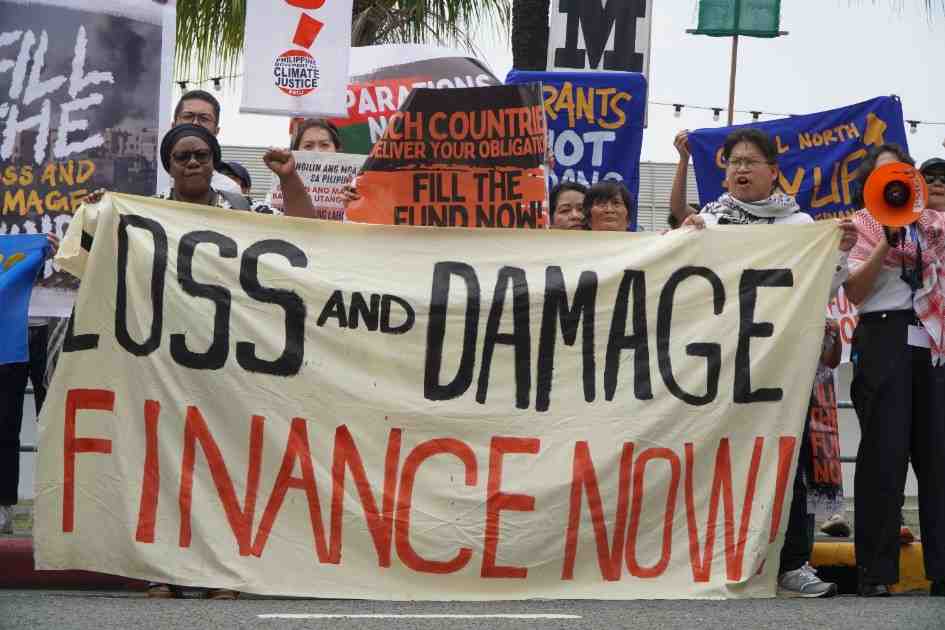Dar es Salaam. As COP30 concluded in Belem, Parties advanced one of the most urgent areas of climate action, responding to loss and damage.
A draft decision presented by the COP30 Presidency outlines what countries have collectively agreed regarding the operationalisation, funding, and next steps of the fund for responding to loss and damage.
The outcome marks continued progress in turning commitments made since COP27 into a functioning system aimed at supporting vulnerable countries already facing irreversible climate impacts.
The decision begins by acknowledging the 2025 annual report of the Fund’s Board, which documents how the Fund has been set up and how its activities are progressing.
Countries welcomed the rapid progress in operationalising the Fund, including establishing the Barbados Implementation Modalities, a framework that guides how the Fund will provide its first grants in 2025 and 2026.
These modalities prioritise country-led and country-owned approaches, allowing affected nations to define their own needs and strategies for responding to loss and damage.
A major milestone registered at COP30 is the launch of the first call for funding requests, enabling developing countries to formally apply for support under the Barbados Implementation Modalities (BIM).
This officially opens the door for climate-vulnerable nations to start accessing resources for urgent loss and damage needs.
The draft decision also recognises the contribution of institutions that helped during the Fund’s transition period, particularly the UNFCCC Secretariat, the Green Climate Fund, and the UNDP, which jointly formed an interim secretariat until the Fund’s independent secretariat was fully established.
Financial pledges attracted significant attention. According to the decision text, new commitments from Iceland, Japan, Latvia, Luxembourg, Spain, and the Walloon Region of Belgium bring the Fund’s total pledges to $817.01 million (Sh2.04 trilion).
This amount reflects the continuing effort to build the Fund’s financial base, although countries noted the need for enhanced and more predictable contributions.
COP30 also welcomed the Fund Board’s 2026 workplan, which outlines several key activities. Among them is the continued rollout of the BIM, including developing a risk management framework and exploring rapid disbursement mechanisms that could speed up how countries access funds after climate-related disasters.
The Board will also develop a long-term operating model for the Fund and prepare a resource mobilization strategy, which remains pending.
Another important agreement concerns access to the Fund. Parties noted with appreciation that all developing countries can apply directly using “direct access via national governments,” meaning countries can request funds without relying solely on international agencies.
This is expected to strengthen ownership and simplify procedures for requesting support.
However, Parties also expressed concern about delays in adopting the long-term fundraising and resource mobilization strategy. The Board has been requested to expedite the process, reflecting the urgency for sustainable financing for loss and damage.
The decision emphasises the importance of accessibility, urging the Board to avoid excessive bureaucracy that could slow or hinder access to resources—an issue that developing nations have consistently raised over the years.
While pushing for simplicity, Parties also urged the Board to maintain high fiduciary standards, environmental and social safeguards, and financial transparency.
To enhance participation, the Board was encouraged to finalise policies for active observers and stakeholder engagement, including women, youth, and Indigenous Peoples.
The decision also highlights a commitment to multilingualism, requesting that funding request templates be translated to ease access for non-English-speaking countries.
Looking ahead, COP30 set the timeline for the Fund’s first replenishment process, scheduled to begin in 2027. This milestone will determine how the Fund secures larger, longer-term financial contributions to sustain its operations.
Parties have also been invited to submit their recommendations for future guidance to the Fund before COP31 in 2026. These submissions will help shape the next steps and will be considered by the Standing Committee on Finance before new guidance is adopted.
The agreements made at COP30 signal continued, practical steps in bringing the Loss and Damage Fund to life. While challenges remain especially on long-term funding, the decisions reflect a growing structure that is intended to make finance available, accessible, and responsive to the communities and countries facing severe climate impacts now.


